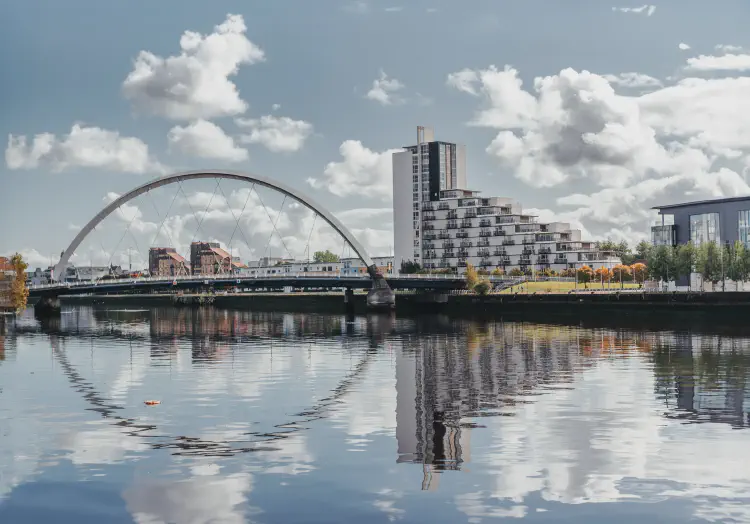Modern architecture and Clyde regeneration
Once dominated by shipyards, the River Clyde has been reborn as a showcase of modern architecture and cultural development. Glasgow’s waterfront now reflects both its industrial legacy and its creative future.
- Scotland Tours
- 2 min read

The Clyde Regeneration
From the late 20th century, Glasgow undertook major regeneration projects to transform its riverfront. Former docks and shipyards were redeveloped into cultural venues, event spaces, and modern housing. This renewal reconnected the city with its river.
Iconic Modern Architecture
- The Clyde Arc (Squinty Bridge): Opened in 2006, this distinctive bow-shaped bridge has become a symbol of the regenerated waterfront.
- SEC Hydro Arena: A futuristic, dome-shaped venue that hosts concerts and international events, ranked among the world’s busiest arenas.
- Clyde Auditorium (‘The Armadillo’): Designed by Sir Norman Foster, its layered design resembles a series of ship hulls, a nod to Glasgow’s maritime heritage.
- Riverside Museum: Designed by Zaha Hadid, its angular silhouette houses Scotland’s transport museum, merging innovation with history.
The Role of Culture and Events
The regenerated Clyde is not just about buildings but about activity. The waterfront is now a hub for:
- Concerts, exhibitions, and global conferences.
- Leisure activities, including riverside walks and cycling.
- Major sporting events, such as the 2014 Commonwealth Games.
A Blend of Old and New
While sleek glass and steel dominate the new skyline, reminders of the past remain—such as preserved cranes and dockside structures. Together, they create a dialogue between Glasgow’s industrial strength and cultural reinvention.
Why Visitors Should Explore It
The Clyde’s modern architecture and regeneration projects embody Glasgow’s resilience and creativity. Walking the riverfront allows visitors to witness how a city has transformed itself from shipbuilding titan to cultural capital, while still honoring its roots.